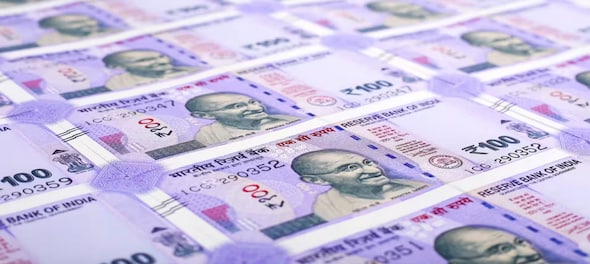
There is an increasing accessibility and utilisation of credit by India's younger generation, according to Paisabazaar's latest white paper, 'Making India Credit Fit.' The average age of first-time credit users born in the 1990s is a mere 23 years, reflecting the early adoption of credit among Indian youth. Furthermore, over 35% of consumers accessed credit before turning 25, highlighting the growing financial independence of young Indians, the survey said.
Live TV
Loading...
This surge in credit adoption, while promoting inclusiveness and financial harmony, also raises concerns about a potential debt trap. The need for financial education, particularly in responsible credit usage, becomes crucial as credit becomes more accessible to the youth, the survey said.
Gender disparity in credit usage
The survey also uncovered significant gender disparities in credit usage. Male consumers dominated both credit-related inquiries and the opening of new accounts, accounting for nearly 90% in both categories. Moreover, men managed an average of three active credit accounts, while women managed two, indicating that women are not the primary borrowers in India.

An in-depth analysis of credit product preferences revealed that women tend to have a higher propensity towards housing loans and consumer durable loans compared to men. Inquiries for consumer durable loans made by women were 18%, while only 14% were made by men. Similarly, women inquired about housing loans at a rate of 4%, in contrast to men's 2%. This preference is partly due to preferential interest rates and incentives offered to women in these categories.
Despite these findings, women remain significantly underrepresented in the credit score consumer base, accounting for only 12% of Paisabazaar's consumers.
Regional variations in credit health
The survey revealed striking regional variations in credit health among consumers in India. While access to formal credit is more prevalent in tier 1 metros, access to credit across tier 2, 3, and beyond locations is on the rise. Increased digitisation and a growing comfort with handling credit have contributed to this trend.
However, the survey highlighted the importance of educating consumers on responsible credit behaviour, as only less than 25% of consumers in both metros and non-metros have an excellent credit profile.
Southern and western Indian cities dominated the list of India's most credit-healthy cities, with Bengaluru taking the top spot, followed by Ahmedabad, Mumbai, Pune, Chennai, and Delhi. In contrast, northern and eastern cities were underrepresented in the list.

Self-employed individuals face hurdles
The survey also indicated that self-employed individuals face challenges in accessing credit, with a lower approval rate for housing loans compared to salaried individuals. The lack of formal employment and structured income often leads to slower credit history building, making access to credit more time-consuming.
Evolving credit behaviour
In the past, credit was viewed as a last resort for dire necessities. However, the survey revealed a shift in consumer mindset, with growing comfort in using credit for lifestyle choices and aspirations. Younger generations are particularly willing to use credit for travel and other lifestyle purposes.
Sharp increase in younger consumers checking credit score
In FY19, 45% of consumers who checked their credit score on Paisabazaar came from metros, while 28% and 27% came from tier 2 and 3 cities. Since then, the share of the latter has increasingly gone up each year. Last year, 75% of new credit score consumers visited Paisabazaar from non-metros, while only 25% came from the top eight metros.

In FY19, 14% of individuals who checked their credit scores on the Paisabazaar platform were under the age of 30, and 52% were in the 30-40 age group. However, by FY23, a noteworthy 38% of Paisabazaar's new credit score consumers were under the age of 30 years, including 17% who were under 25, and less than 30% were in the 30-40 age group.

Salaried consumers are credit healthier
Salaried consumers were found to be credit healthier compared to the self-employed segment, with over 25% of them having an excellent credit score of 770 and above, while only 14% of self-employed consumers demonstrated a strong credit profile.
Age of accessibility of credit
A distinct disparity in age groups can be seen in consumers engaged with credit for the first time. Notably, individuals born in the 1970s, currently aged in their early to mid-40s or early-50s, embarked on their credit journey at an average age of 38. In contrast, those born in the 1980s, now in their early to mid-30s or early-40s, accessed credit for the first time at an average age of 28.
In continuation of this trend of decreasing age of first credit access, consumers born in the 1990s, now in their early to mid-20s or early 30s, took their first credit product at the age of 23.

The survey also showed that 64% of consumers acquired their first credit product before they turned 30. Among these, a notable 37% were under 25. Only 23% of consumers accessed credit for the first time between 30 and 40 years of age, while another 13% used credit after turning 40.
(Edited by : Shoma Bhattacharjee)
Check out our in-depth Market Coverage, Business News & get real-time Stock Market Updates on CNBC-TV18. Also, Watch our channels CNBC-TV18, CNBC Awaaz and CNBC Bajar Live on-the-go!


BJP is planning to ban RSS, says Shiv Sena (UBT) chief Uddhav Thackeray
May 18, 2024 8:01 PM
Punjab Lok Sabha elections: Complete list of Congress candidates
May 18, 2024 4:08 PM
Punjab Lok Sabha elections: Check full list of AAP candidates and constituencies
May 18, 2024 12:59 PM
PM Modi, Rahul Gandhi election rallies in Delhi today: Here are the routes to avoid
May 18, 2024 11:28 AM

